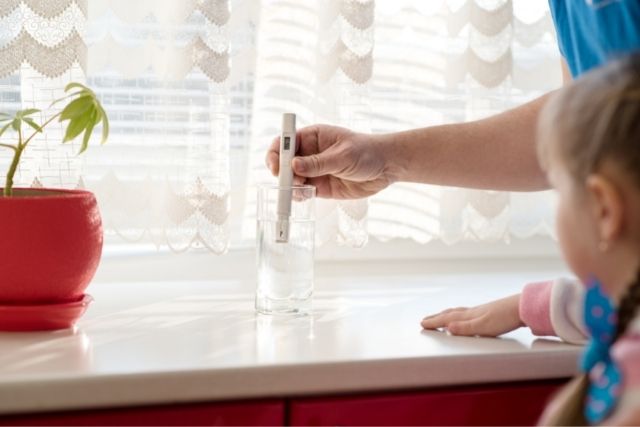What Substances Can Water Testing Find in Your Water

Depending on its source, the water that flows from your faucet may contain a variety of contaminants. A professional water tester can determine the quality of the water and its physical and chemical properties. What substances can water testing find in your water? Read below to find the answer.
Nitrates
Nitrate is a naturally occurring chemical created when nitrogen interacts with oxygen or ozone. Nitrate can occur in soil and groundwater at doses that don’t cause health issues, but elevated levels are typical when your water comes from a well. However, excessive amounts of nitrate in drinking water can be harmful to a person’s health, especially babies and pregnant women. Fertilizers, industrial waste, improperly constructed wells, flooding, and more can lead to excessive contamination.
Iron
Iron can seep into water sources through rock and soil formations, and even small levels can cause your water to become yellow or reddish. Look for signs such as discoloration, a rotten egg smell, reddish-brown stains on your clothing, and rust stains around fixtures and sinks that indicate iron issues. You should call in a water tester right away if you notice these issues, as excess iron in water can cause many health problems.
Hardness
The quantity of calcium and magnesium in water determines its hardness, and the more considerable the amount, the harder the water is. The presence of hard water can be a real nuisance, as it can leave your skin dry after baths and showers, leave scummy residue on dishes, and stain sinks and bathtubs. Water testing can determine if installing a water softener system may be right for you.
E.coli and Other Coliform Bacteria
The bacteria Escherichia coli (E. coli) resides in healthy humans’ and animals’ intestines and is usually harmless. Still, some strains, such as E. coli O157:H7, can cause severe stomach pains, vomiting, and diarrhea. Well water is the most vulnerable to contamination from several occurrences, including flooding and extreme weather, runoff from rainfall and debris near your well, and sewage system issues and overflows that bring excrement into the well. You should test your well yearly and any time the appearance, smell, or taste of the water changes.
PH Balance
Testing will also analyze the pH balance of your water, which is the measure of how acidic or basic the water is on a scale of 0 to 14. Pure water has a pH of 7 and is called “neutral,” since it’s neither acidic nor basic. For the safest drinking water, the pH level of your water should be between 6.5 and 8.5 on the pH scale.
When looking at what substances water testing can find in your water, these are just a handful of different chemicals and contaminants that a test can pick up. For San Antonio water testing, Alamo Water Softeners can screen for basic contaminants and pH balance and more advanced analysis when samples get sent to a laboratory. Feel to contact us with any questions about our services.


